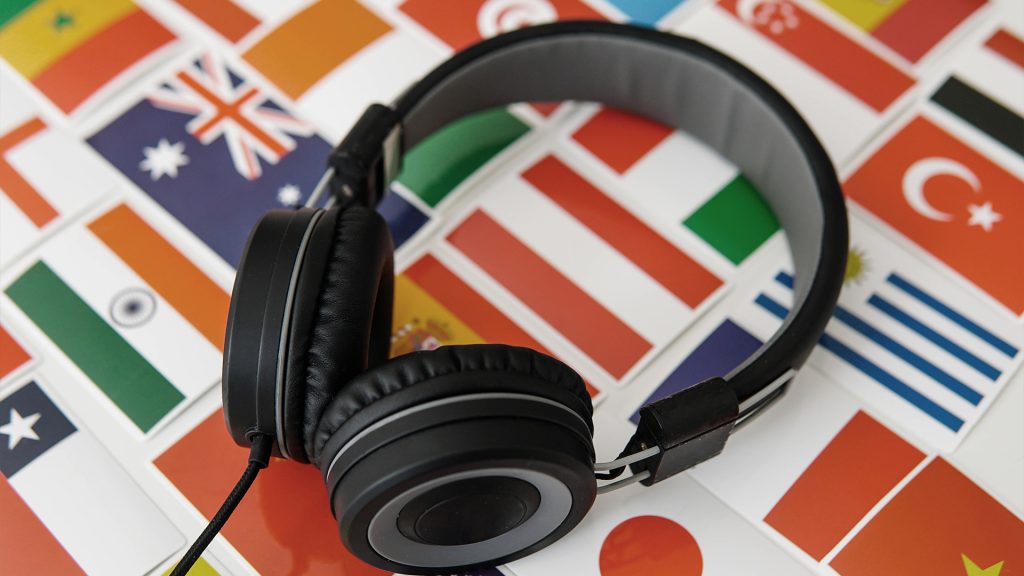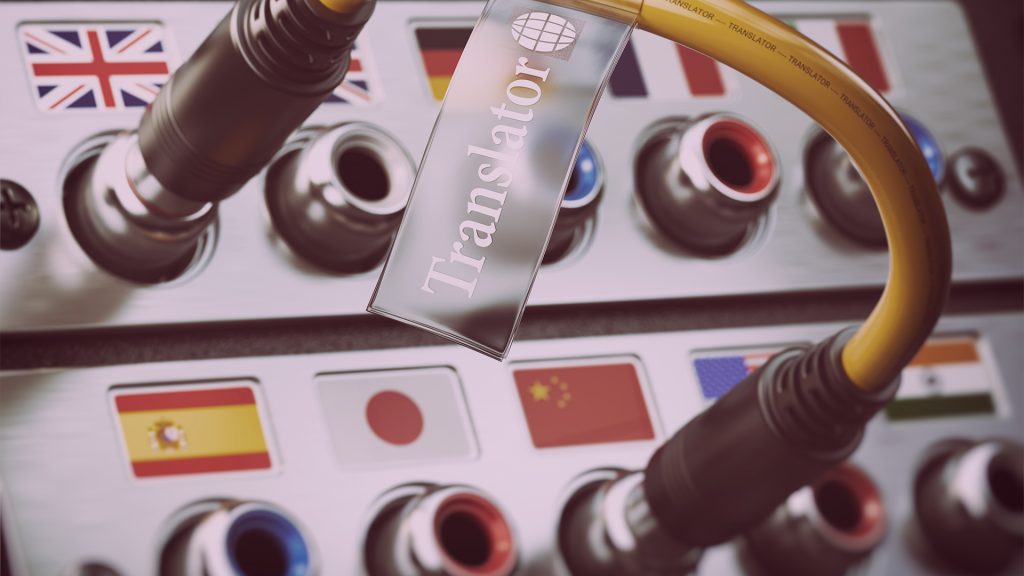Simultaneous interpreting
Simultaneous interpreting (also known as simultaneous translation or conference interpreting) is where one or more speakers deliver a speech in one language while one or two interpreters, in a soundproof cabin, simultaneously give the same speech or presentation in the target language of the listeners. There tend to be two interpreters working in each cabin for the same language combination—interpreting as a team and alternating every 25 minutes.
Occasionally, this type of unidirectional interpreting does not work because there is more than one passive language (speakers) and more than one active language (interpreters). In these cases, relay or relay interpreting is used; the interpreters do not interpret from the original language of the speech but rather from another language that serves as a link between the original language and the target language. The language used between the original and the target language is called the pivot language.
Simultaneous interpreting is used at congresses, international events, etc.
Audiovisual equipment is required to ensure this type of interpreting runs smoothly, consisting of audio cabins, wireless receivers, PA systems, microphones, monitors and a sound technician who oversees the correct functioning of each of these components.
There are times when interpreting is carried out using a system comprising a radio-frequency transmitter and receivers, but without a soundproof cabin: this is the Infoport case. Its compact design makes it useful in certain circumstances, such as site visits, allowing delegates and interpreters to move about easily. Nevertheless, it will never replace the role of a cabin for a conference, as there would be sound interference.
Consecutive interpreting
In consecutive interpreting, a speaker delivers a speech or presentation in one language with an interpreter next to them, who then reproduces the same speech in the target language of the listeners.
Every so often, the speaker will pause to allow the interpreter to reproduce the speech in the target language of the listeners. The speaking times of the speaker and interpreter tend to be determined before the speech begins, though, are usually around 3-5 minutes for speeches and presentations—and as long as required for negotiations and meetings.
Consecutive interpreting is commonly used in bilateral meetings, negotiations, press conferences, interviews, lunches, and welcome speeches, as well as in speeches and presentations.
For the consecutive interpretation to run smoothly, the interpreter must take the necessary notes to reproduce the speaker’s speech accurately.


Liaison and escort interpreting
With liaison and escort interpreting, an interpreter serves as a liaison between 2 or more people who speak different languages. The liaison interpreter translates from both directions so that the content of each speaker’s discourse can be heard by the other listeners in their mother tongue.
An escort interpreter performs the same functions as a liaison interpreter but also accompanies the client wherever they need to go.
This could be for business trips, meetings with foreign individuals at international organisations, sightseeing tours, etc.
Whispered interpreting
This type of interpreting involves the final listener hiring an interpreter to interpret only for them, as the listener’s mother tongue is different from that of all the other listeners in the hall or meeting.
The interpreting is done simultaneously and, as the name implies, in a low voice to not disturb the rest of the listeners. This form of interpreting is not frequently used and is typically for short presentations; it is also unidirectional.
This is also known as chuchotage interpretation.
Sworn interpreting
Sworn interpreting is mostly used in court. However, it can also be used in notarial acts and the private sphere, for instance, when signing agreements between companies, or resolution of contracts, etc.
This interpreting is similar to liaison interpreting except that it is certified by a sworn interpreter appointed by the Ministry of Foreign Affairs, who obtains the title after successfully passing a series of translation tests.
Once the interpreter has finished interpreting, they must sign and swear everything that has been interpreted orally or in writing.


